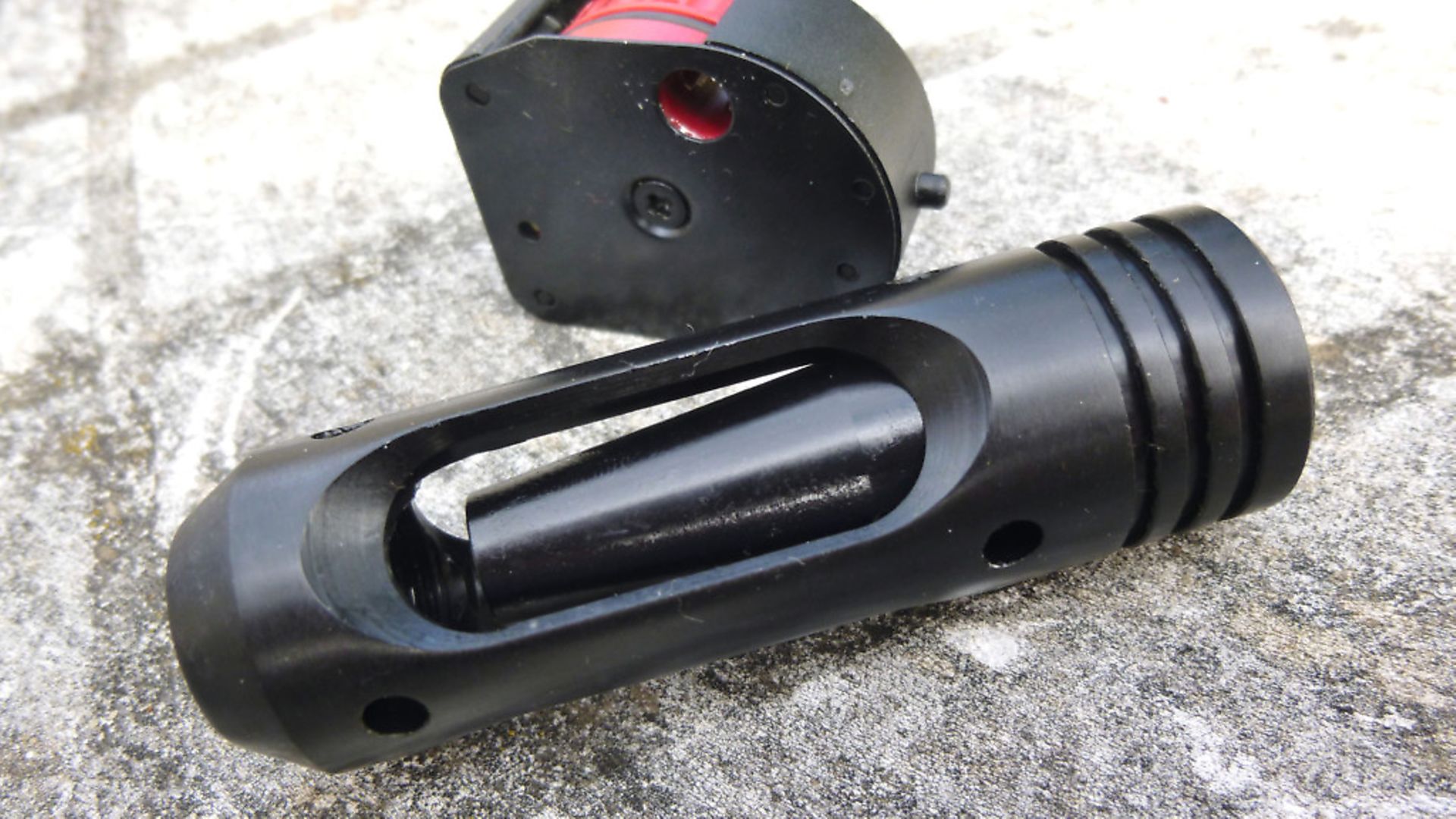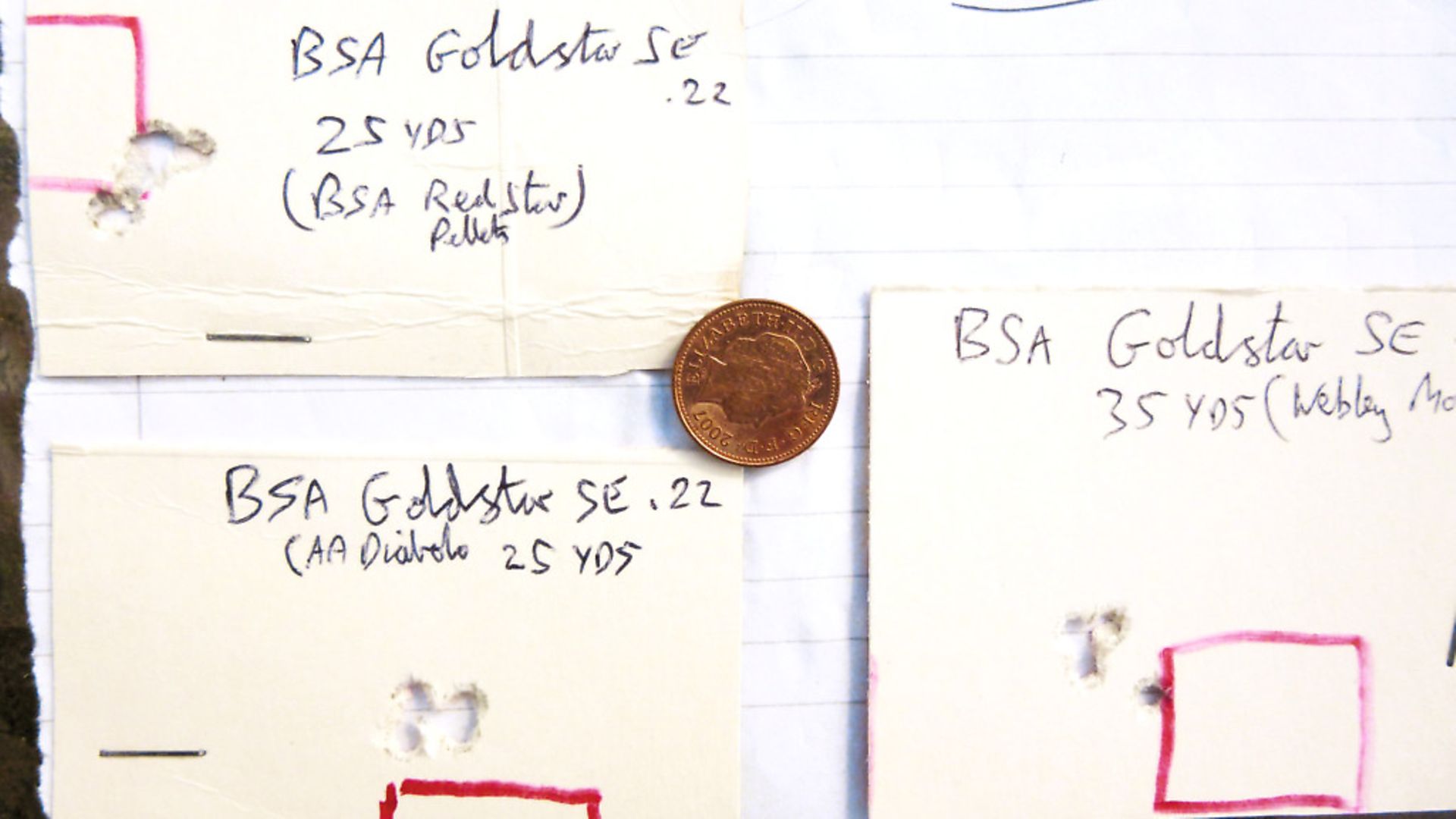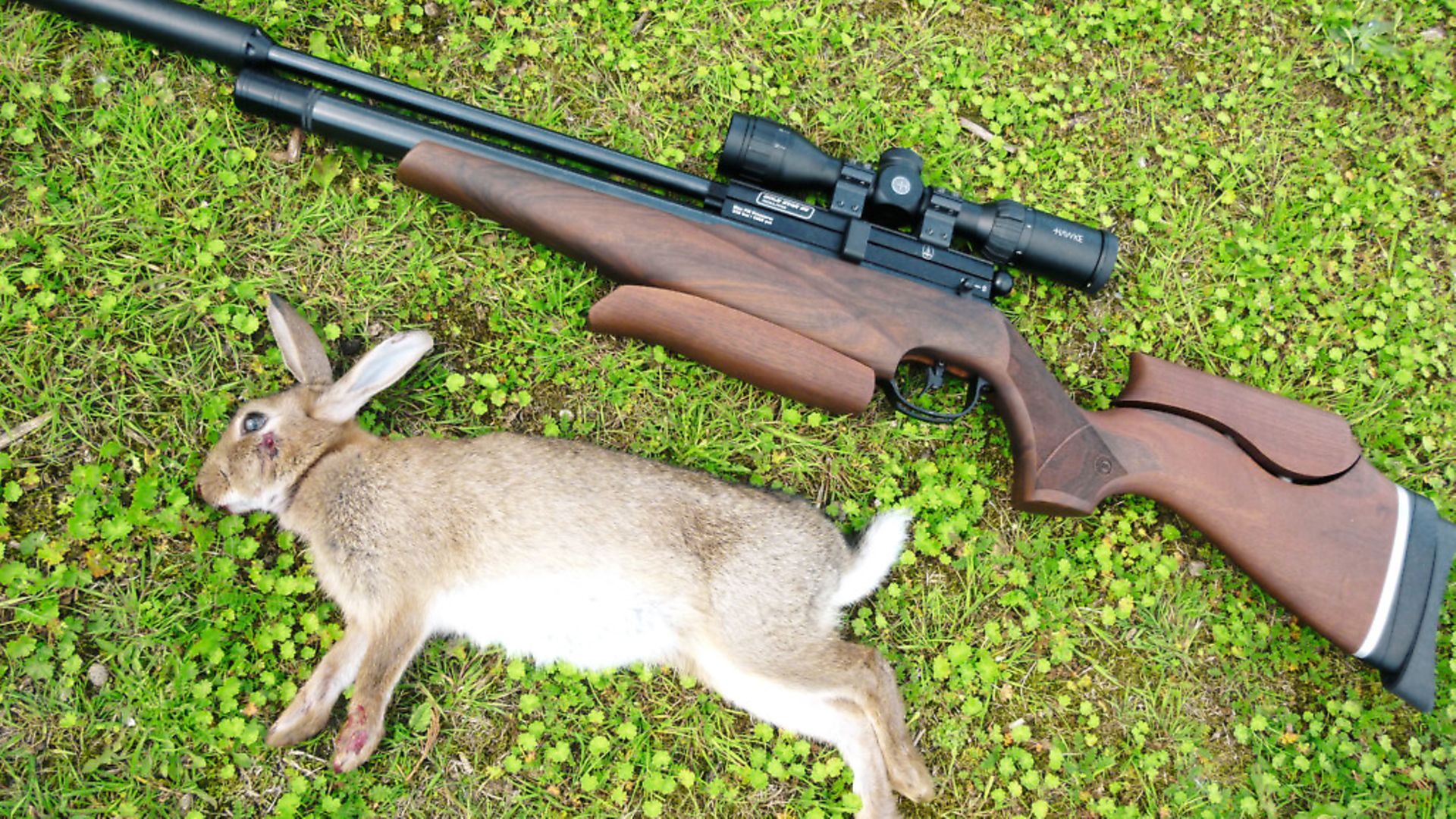Mark Camoccio concludes his BSA Goldstar hunter review
 credit: Archant
credit: Archant
Last month, we started to look at the BSA Goldstar and what it had to offer as a double-up hunter and HFT competition rifle. Now it’s time to see just what it can do.
We’ve got air on board, so now we need to prime the magazine. BSA’s latest 10-shot mag’s are quite a neat design, and come colour-coded for calibre. The .22 on test gets a red magazine drum, whilst .177 comes in blue. Filling the rotary magazine cassette is easy, and just needs pellets to be pushed head first into each aperture in turn. The centre is spring-loaded, so just revolve the self-lubing internal drum (PTFE is used in its manufacture) and fill each chamber as it’s revealed. Once the magazine is full, pull back the cocking bolt fully, push the magazine into its slot from the left, until the small dimple lines up on the right side, pull the mag’ retaining catch rearwards to lock, then close the bolt and you’re ready to go. Subsequent cycling of the bolt automatically indexes the next shot.
As mentioned, the Goldstar is the first BSA to be supplied complete with a muzzle stripper; a device designed to maximise accuracy using an adjustable cone, by stripping away excess muzzle blast from the pellet, leaving it to continue its path in stable airflow. The theory is great, and strippers have become extremely popular in both FT and HFT. Plan on hunting, though, and an effective silencer has to be preferable.
 credit: Archant
credit: Archant
Wind cheater?
BSA are one of the few manufacturers that still make their own barrels, and the Goldstar sports their ECHF-rated tube, standing for ‘Enhanced Cold Hammer Forged’. I was lucky enough to have a tour of the factory in Birmingham a while back, and whilst we were allowed to see barrel production, the company was quite cagey about keeping the process to themselves. When the Goldstar was launched, there was some talk of this model being less susceptible to wind, and so much so, that I actually conducted a test with the aid of a friend, shooting simultaneously, and gauging results. Suffice to say, that no evidence was found to back up the rumours. Indeed, whilst occasional anomalies do crop up with airguns, basic laws of physics normally call the shots. Anyhow, I’m not convinced on this one.
 credit: Archant
credit: Archant
Facts and figures
The Goldstar features a regulated action, and the factory claim 90 shots in .22 calibre, and around 75 in .177. My chronograph test showed 90 shots returning a total velocity spread of 24fps, which is pretty good. This was conducted using the BSA Red Star pellets supplied for test. My original test at the launch of this model returned 12fps total spread using Air Arms Diabolo Field JSB pellets, though, so it gives a good idea of what the Goldstar is capable of all round. The AA pellets are more consistent weight-wise, so we can expect better consistency. Either way, the test model here gave very creditable results.
In use, that chunky Bolas bolt is super-slick and comfortable, and the magazine system worked faultlessly and smoothly throughout. Accuracy-wise, again, I started with the Red Star pellets supplied, and instantly achieved a solid ragged cluster over 25 yards. Switching to Air Arms Diabolos over the same distance closed down the groups still further, to clusters the size of a five-pence piece. At 35 yards, using both AA Diabolos and Webley Mosquitos, the Goldstar produced easy groups, coverable with a penny. Power variation was significant, pellet to pellet, too; the Red Stars achieving 10.4ft.lbs., against 11.7ft.lbs. for Air Arms Diabolos.
A half-decent, two-stage trigger helps, but with that sort of accuracy, I was confident and itching to get into the field and after a quick call to my permission, I was soon lying in wait, out in the warm sunshine and eager to catch a rabbit or two. The Goldstar felt totally at home in this scenario; light enough to carry around, yet designed to set you up for an accurate, comfortable shot when it matters. My first and only rabbit came just ten minutes into the session, as it emerged from its burrow just 25 yards from my stakeout. Lying prone, holding my position, and taking it calmly, I gently squeezed the trigger, and the rabbit folded in its tracks. Hardly a huge test, but valuable feedback as to field credentials.
Conclusion
The Goldstar just feels right, and with its fair share of HFT wins, it has also proved that it has what it takes to compete. Take this route, and I’d always recommend .177 calibre; for the flatter trajectory and a single-load action, for safety and simplicity. Either way, this model has proved itself to be a highly versatile rifle, built with one eye on competition, yet equally effective against live quarry. If you don’t share my obsession with walnut, then the biggest problem will be deciding which stock to go for!
Visit the BSA Guns website here.
See Mark Camaccio’s first review here.